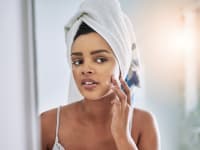Products are chosen independently by our editors. Purchases made through our links may earn us a commission.
Picture this: Your bags are packed, you shuffled through security, and clicked in your seatbelt on the airplane that’ll carry you to your vacation. Now there’s nothing left to do but relax and maybe get some shut-eye. But to avoid waking up with parched skin, you may want to put some extra precautions in place prior to your snooze. To understand how and why flying affects your skin, we spoke with Dr. Suzanne Friedler, board-certified dermatologist with Advanced Dermatology PC in New York.
Does air travel really dry out the skin?
If you’ve flown in an airplane for more than an hour or two, you probably guessed the answer correctly: Yes. “Traveling is rough on skin for a number of reasons,” Friedler says. First, the humidity of an aircraft’s cabin dips below 20% while the typical humidity in a home is more than 30%, according to the World Health Organization (WHO). “When the skin is exposed to low ambient humidity, it becomes dehydrated, leading to [a] dry, dull, tight feeling and even itchy skin,” Friedler explains.
Second, “the high altitudes while flying amplify the amount of UV that can enter the cabin through the windows,” Friedler says. “UVB is filtered by the window glass but UVA has high penetration through glass and that is why many older pilots show severe photo aging on their faces.” UVB refers to shorter ultraviolet wavelengths that are associated with sun burns, while UVA refers to longer wavelengths that cause skin aging.
What can you bring to prevent your skin from drying out on a flight?
Luckily, there are several items you can take to prevent your skin from drying out and to protect it from harmful UV rays.
1. A water bottle for in-flight sipping
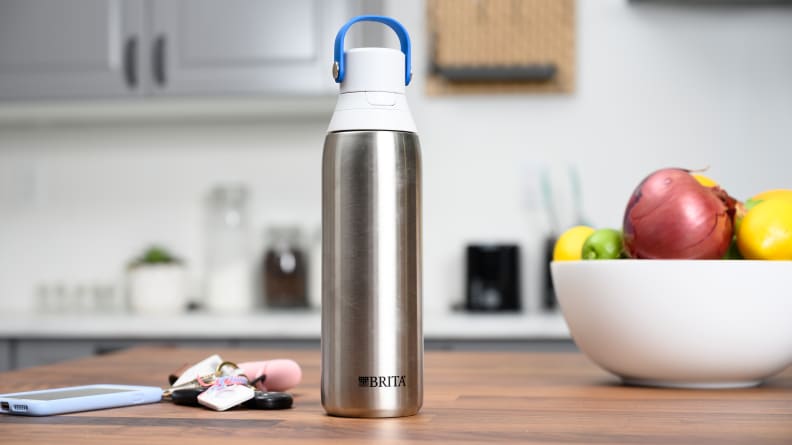
Keep the Brita Stainless Steel Filtering Water Bottle on hand to stay hydrated.
To make sure you have plenty of water in-flight, carry a reusable water bottle with you—just make sure it’s empty prior to going through security to avoid getting your bottle confiscated. Once at your gate, fill it for your flight so you never run out of water. After testing water bottles, we at Reviewed recommend the Brita Stainless Steel Filtering Water Bottle because it keeps water cold for up to 24 hours, it has a wide mouth for adding ice cubes, and it contains a filter that keeps water clean and the bottle odor-free.
Get the Brita Stainless Steel Filtering Water Bottle from Amazon starting at $16.15
2. A rich cream for hydrating your skin
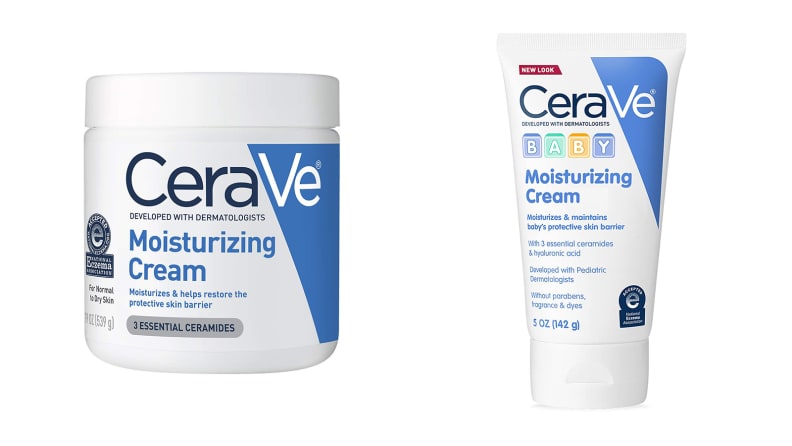
Add a tube of the Cerave Moisturizing Cream to your bag.
To keep your skin well-moisturized, Friedler recommends the Cerave Moisturizing Cream, as it contains ceramides, or lipids that make up the outermost layer of the skin to protect it from moisture loss. It also contains hyaluronic acid, an ingredient that helps the skin retain hydration.
While the full-size comes in a tub, you can snag this cream in a travel-size tube that's TSA-compliant.
Get the Cerave Moisturizing Cream in travel size from Amazon for $5.27
3. A sheet mask for an extra boost of moisture
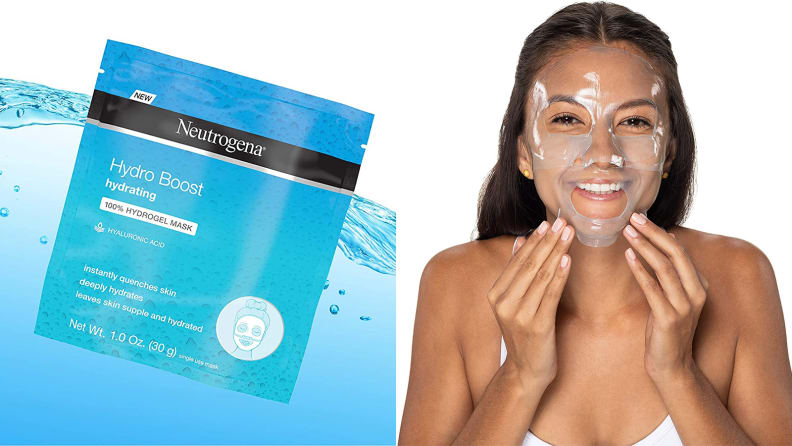
Snag a pack of the Neutrogena Hydro Boost Sheet Face Masks to keep your skin hydrated.
In addition to carrying a moisturizer with you onto the flight, consider packing a sheet mask. “A hydrating mask such as Neutrogena Hydro Boost can do wonders after or even during a flight to restore moisture,” Friedler says. The mask consists of a face-shaped, gel-like cloth that’s soaked in a gentle, hydrating serum that includes hyaluronic acid.
Once you get to your destination, place the sheet on your face, allow your skin to absorb the serum, massage excess liquid into your face, and toss the cloth. Snag a 12-pack to use for future travels or at-home spa nights.
Get the Neutrogena Hydro Boost Sheet Face Mask (12-pack) from Amazon for $30.60
4. A mineral sunscreen that blocks UVA and UVB rays
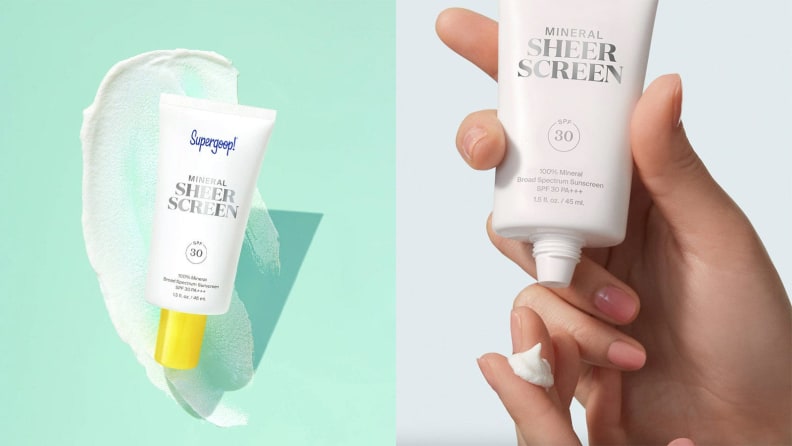
Keep your skin protected in-flight with the Supergoop Mineral Sheer Screen with SPF 30.
Prior to your flight, use a sunscreen with broad spectrum SPF to combat the effects of UVA and UVB rays. For one that contains reef-safe zinc oxide but won’t leave a white film on your skin, try Supergoop Mineral Sheer Screen with SPF 30. Apply a thick layer to the skin, allow it to absorb in, and reapply every two hours.
Additionally, minimize sun exposure by keeping the shade down on the plane, recommends Friedler.
Get the Supergoop Mineral Sheer Screen SPF 30 from Sephora for $38
5. A balm to prevent chapped lips
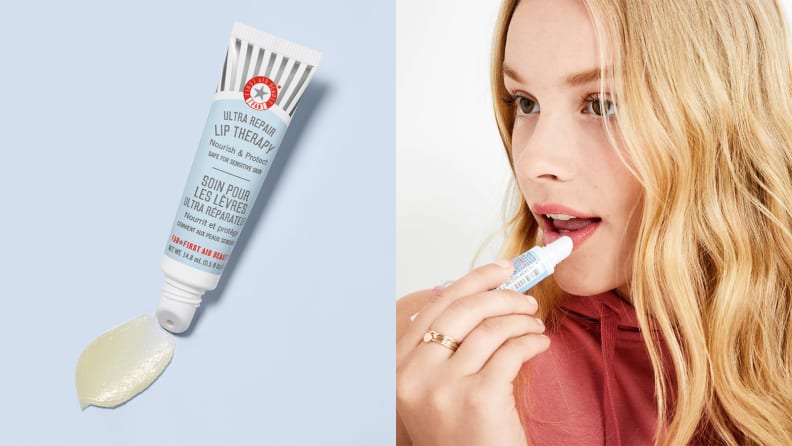
Prevent chapped lips with the First Aid Beauty Ultra Repair Lip Therapy.
Your lips may also feel the effects of the dry airplane air. This First Aid Beauty Ultra Repair Lip Therapy contains colloidal oatmeal to soothe skin, shea butter to moisturize and protect the skin barrier, and glycerin to hydrate. Apply a thick layer pre-flight and continue re-applying under your face mask as needed.
Get the First Aid Beauty Ultra Repair Lip Therapy from Sephora for $12
Prices were accurate at the time this article was published but may change over time.

